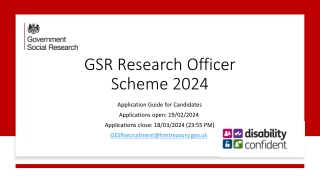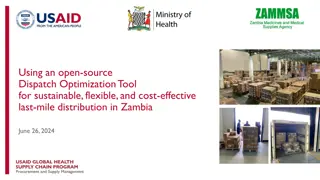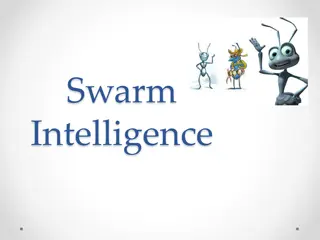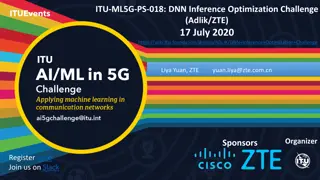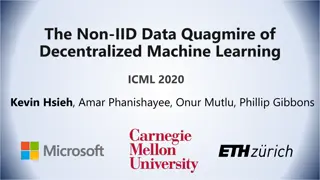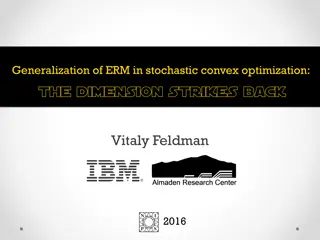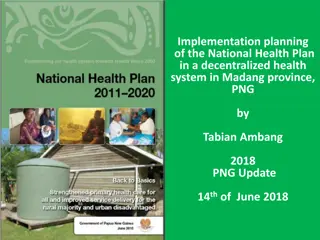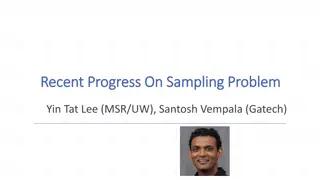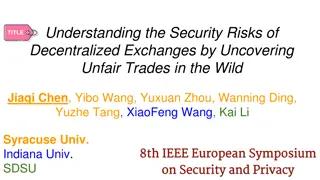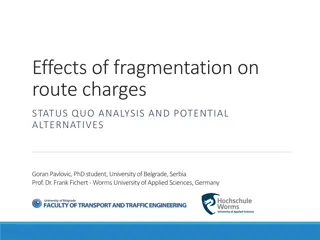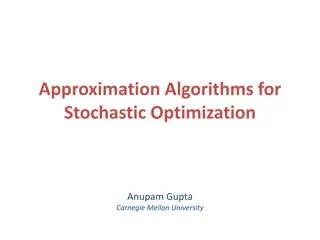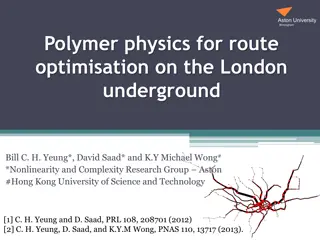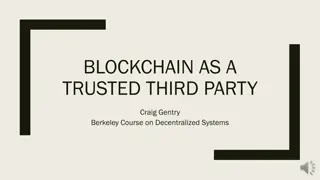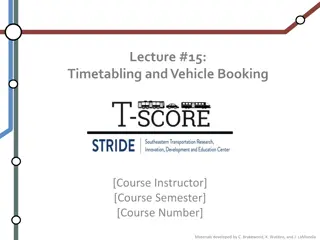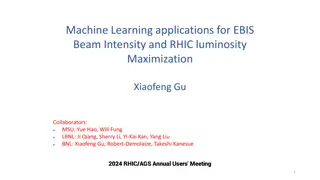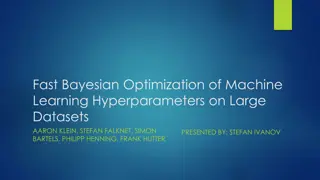Decentralized Optimization of Vehicle Route Planning
Connected and autonomous vehicles introduce new possibilities in traffic routing. Explore levels of altruism among drivers and compare global objectives across different cities. Overcome challenges in data sourcing and simulation run time to achieve a functional system. Analyze technical problems and research settings in morning rush hour traffic simulations.
Download Presentation

Please find below an Image/Link to download the presentation.
The content on the website is provided AS IS for your information and personal use only. It may not be sold, licensed, or shared on other websites without obtaining consent from the author. Download presentation by click this link. If you encounter any issues during the download, it is possible that the publisher has removed the file from their server.
E N D
Presentation Transcript
Decentralized Optimization of Vehicle Route Planning GRACE JENNINGS GRACE JENNINGS ILIAS GEROSTATHOPOULOS, RAPHAEL STERN DEPARTMENT OF INFORMATICS TECHNICAL UNIVERSITY MUNICH, GERMANY
1. General Problem and Context Rise of connected and autonomous vehicles introduces new possibilities in vehicle and traffic routing Already have connectivity using smartphones with routing applications like Google Maps and Waze System Optimal SO route assignment Suggesting routes for each individual and optimize these routes based on the network state
2. Human-Cyberphysical System Problem Traffic control is a complex problem depending on human desires, physical constraints and computing limitations Explore different `levels of altruism of the drivers Local v. Global objectives Also compare across cities with different structural characteristics Connecting the EPOS decentralized optimization software with the SUMO traffic simulation application In this simulation an individual agent is an autonomous vehicle
3. Challenges in Reaching a Functional System Finding the right data Added a feature to the simulation that assigned vehicles specific origins and destinations on the map Couldn t find widespread OD data for various cities Used ZIP codes and populations to choose the origins Length of simulation run time Had to perform various optimizations to reduce the run time of the simulations
4. The Technical Problem and Research Setting One simulation run was designed to represent morning rush hour traffic The number of cars was determined by the number of people commuting to work by car in each city A simulation time of 30 minutes was chose to represent average commute time in the US Ran 11 simulation for each of the four cities 11 values of the parameter in the optimization software that controlled the selfishness of each agent Compared the local and global costs between cities for each level of selfishness
TRAFFIC NETWORKS C A A. Annapolis B. Boulder C. Duluth D. Manhattan B D
5. Future Research Expanding the route assignment for more accurate destinations To better simulate traffic patterns and congestion Explore the differences in route assignment for sparse v. dense networks Adding a fairness objective to the decision making of the individual vehicles
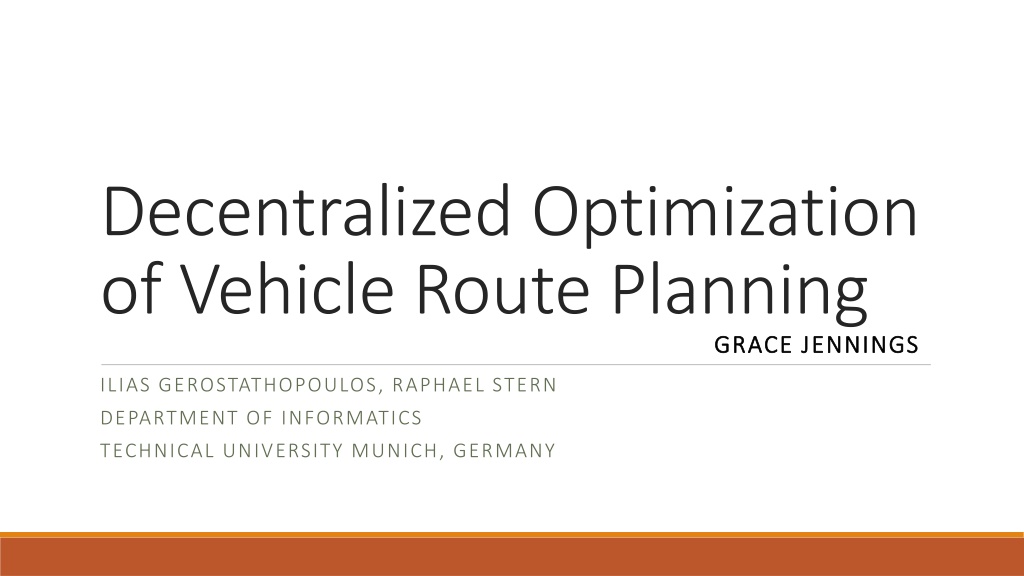
 undefined
undefined







